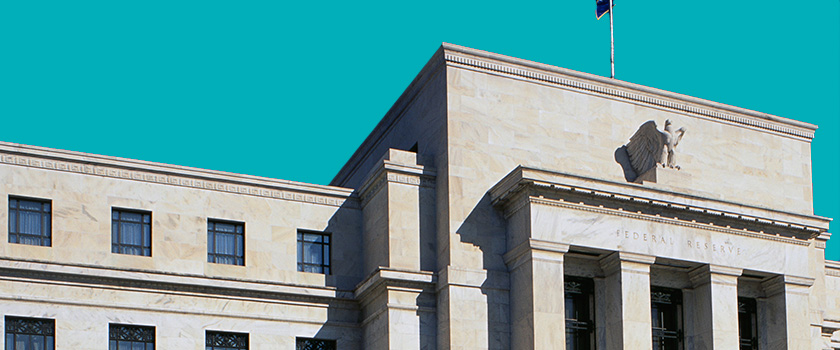Looking back to the early 1950s, the US central bank has required two of three catalysts to be in place before it has historically begun a rate-cutting cycle: some combination of the US industrial sector, as measured by the Institute for Supply Management’s Purchasing Manager’s Index (PMI) in contraction (i.e. less than 50); unemployment rising by more than 50 bps over the previous year (the Sahm rule); and/or disinflation risks morphing into deflation with headline CPI falling below 3%, has preceded rate-cutting cycles in the past.
Only a systemic threat to the financial system – more common since 1995 – has overridden these catalysts. However, even here, often at least one of the three triggers was present amidst a systemic threat to begin a Fed rate-cutting cycle.
Through this lens, the US PMI’s recent rise above 50 for the first time since the early days following Russia’s 2022 invasion of Ukraine, the strong non-farm payroll report which has seen unemployment over the past year stay near its lowest levels since the 1960s, and with inflation remaining above the 3% threshold since mid-2023, the US Federal Reserve admittedly has few reasons to move to begin its rate-cutting cycle.
However, one new challenge facing US policymakers points in favour of an earlier-than-expected easing cycle for America’s central bank. In 2023 alone, interest costs on the US national debt rose above USD 1 trillion for the first time in history. While outstanding national debt rose by nearly USD 2.5 trillion, nearly 60% of the 2023 increase in interest costs came from the nearly 50 bps rise in average coupons paid on outstanding Treasury securities in the year.
This level of debt servicing accounted for almost 15% of total tax receipts and 2.4% of GDP. The only time US federal debt servicing has been above this level in the post-war period was in the early 1980s against a backdrop of the Cold War military build-up and tax cuts instigated by US President Ronald Reagan.
With the US economy showing signs of recovering, projections from the US Congressional Budget Office suggest that the American deficit can moderate, while still adding USD 1.5–2 trillion to the outstanding debt. Even if average coupons on Treasury securities stabilise, this could still translate into total interest costs reaching USD 1.1 trillion in the current year. With nominal GDP slowing as inflation eases, this has the potential to increase the debt servicing burden on the US Treasury.
That said, with the US government having turned to shorter-dated T-bills to finance much of its deficit over the past year despite an inverted yield curve (i.e. short-dated yields being higher than long-dated yields), the US Treasury could benefit meaningfully from a cut in policy rates by the US Federal Reserve.
Admittedly, such a cut might also stimulate not only the real economy, but also spur on the still moderately elevated inflation, raising overall nominal GDP growth (and associated tax collections). Counterintuitively, this might allow US interest costs as a share of both tax revenues and nominal GDP to retreat from the levels of the late 1970s and early 1980s.
Therefore, the rising US debt burden has left the Federal Reserve potentially facing a difficult choice: either maintaining its inflation-fighting stance in the face of still elevated inflation amidst a near full employment recovery in the US industrial economy and potentially seeing US debt sustainability challenged should it breach Reagan-era debt service burdens, or amending its inflation-fighting focus to help ensure US debt sustainability going into a fraught US presidential election season and potential political transition.
The gradual pivot in Fed rhetoric since October 2023 may provide some guidance as to the path the American central bank might choose; it should not be forgotten that, at the Federal Open Market Committee’s (FOMC) September 2023 meeting, the committee noted that, “…economic activity has been expanding at a solid pace. Job gains have...remain[ed] strong, and the unemployment rate has remained low. Inflation…remains elevated.” This language remained largely unchanged at the March 2024 meeting.
However, in the interim, in late October, when 10-year US Treasury yields had risen to 5%, not only did the US Treasury Secretary slow the issuance of long-dated debt to take pressure off the bond markets, but the US FOMC also began a slow pivot from its pause begun in July 2023. By December 2023, the FOMC minutes signalled that, “…the policy rate was likely at or near its peak for this tightening cycle,” with committee members pencilling in three rate cuts by the end of 2024. Moreover, despite strong Q1 economic data, the Fed maintained its outlook for rate cuts and augmented this prospective policy stance by signalling at its March 2024 press conference that a decision was near regarding a slowing of the Fed’s quantitative tightening programme which drains liquidity from the US economy.
The only time we have witnessed the Fed slowing its pace of quantitative tightening and cutting interest rates was in 2019 when the US industrial economy was expanding and unemployment was, like today, steady, averaging 3.5–4%.
In 2019, however, the Fed’s preferred inflation measure (core PCE) was already slowing from 2% at the start of the year to 1.5% by mid-2019. This, in combination with spreading turmoil in the US money markets, kicked off the 2019 Fed rate-cutting cycle prior to the return to the zero-interest-rate policy of the global pandemic.
By slowing its quantitative tightening programme before renewed stress begins to build in the system following the Silicon Valley Bank failure a year ago and the end of its emergency liquidity facility, the Fed appears to be seeking to pre-emptively loosen balance sheet policies – and potentially interest rate policies – to strike a balance between not only inflation and debt sustainability, but also between inflation and financial system stability risks.
Thus, even though the catalysts that have guided the Fed’s rate-cutting operations since the early-1950s have still yet to be met, debt sustainability and financial system stability appear to be rising up the Fed’s priority list.
For equity investors, this suggests that catalysts sparking the next leg of upgrades to earnings expectations looking to year-end should emerge in the months ahead, thus providing an opportunity for investors who missed out on the nearly 25% rally in global equities since October 2023.
As bond investors should see continued interest volatility, and with inflation expectations still modest by historical standards, income-focused credit exposure rather than the anticipation of sustained falls in interest rates should drive fixed-income returns moving into the summer.


 Norman Villamin
Norman Villamin